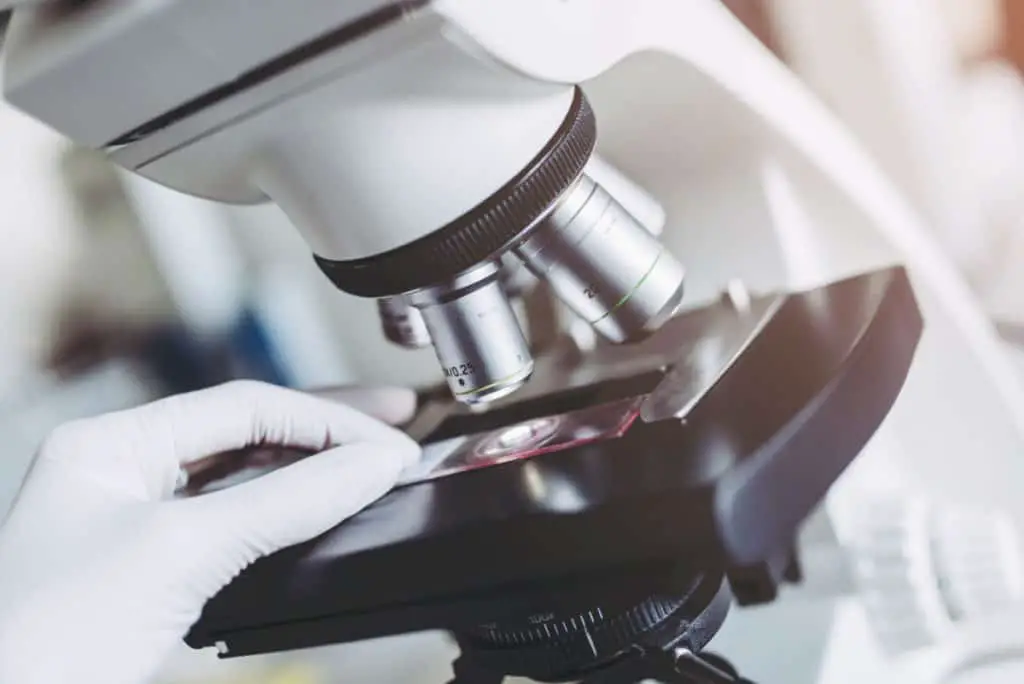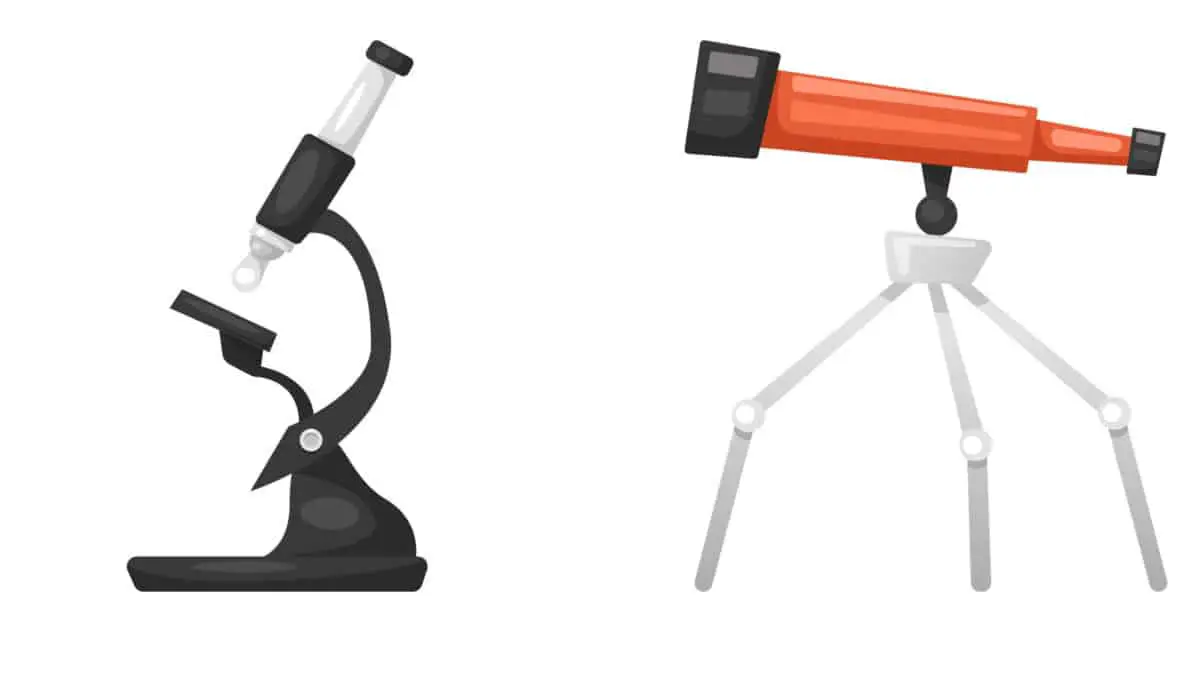Telescopes and microscopes are both important inventions that are used commonly across many fields of study. You will notice that both of these words end in “scope”, but they are used for totally different purposes. Now how do we distinguish the two instruments?
A telescope allows seeing things up close that are far away from the human eye, such as planets and other celestial objects. A microscope also allows seeing objects at an up-close view, but with the details magnified and at a much closer distance, such as microorganisms and cells.
Both of these instruments have unlocked more doors of knowledge than you can imagine! They give us the ability to get a close view of something that we normally can’t see with the naked eye and they have brought unseen worlds a little closer. Let’s dig in a little deeper into each of their purposes, similarities, and differences.
Telescope

Purpose of a Telescope
The purpose of a telescope is to enhance the size of faraway objects.
Telescopes are needed to view distant objects and they are usually used for observation of outer space. Astronomical objects are oftentimes so remote that they are invisible to the naked eye. Because of this, telescopes are needed for astronomers to view these celestial objects.
How a Telescope Works
- Refracting telescopes
For refracting telescopes to work, two lenses are employed to derive light. One is in the eyepiece while the other is at the end of the telescope. The first lens has the purpose of making the image come into focus. The second lens is to enlarge the image. These convex lenses bend the light inward, making the image appear smaller within the telescope.
- Reflecting telescopes
Rather than using lenses, reflecting telescopes use curved mirrors to bring light into the image. There are two mirrors: the primary and secondary mirrors. The primary mirror is the larger of the two and is angled to reflect against the second mirror. The image is then brought into the eyepiece, which contains a lens that magnifies images. Concave, flat, and convex mirrors can be used for this telescope.
- Catadioptric telescopes
Catadioptric telescopes work by using a combination of lenses and mirrors. The light enters the telescope through the lens and is reflected off the primary mirror. The light then hits the secondary mirror and enters the eyepiece. By using these mirrors, telescopes can present a magnified, clear picture.
When to Use a Telescope
Telescopes are most commonly used in astronomy. They help people identify stars, planets, and more things that we cannot see from our position on earth. They help us better identify what exists in space. Telescopes have been around for hundreds of years, but they continue to grow more advanced.
Microscope

Purpose of a Microscope
A microscope gives us the ability to see small objects magnified, for an up-close look. There are multiple lenses that can be adjusted to give you varying magnified levels to observe your sample. In other words, you can see your subject at different intensities and magnification settings. Ultimately, a microscope acts as an advanced magnifying glass. You can see fine details and structures that would be invisible otherwise.
How a Microscope Works
A microscope changes the amount of light that enters your eye. This is done by a light that reflects off of a mirror that is built into the microscope. It has a curved lens that allows light to reflect off of the curve, which ultimately “bends” or “shapes” a better view of the object up close towards your eye.
- Stereo Microscope
This type of microscope provides a 3D view of an object that you could hold in your hand. There will not be light passing through the subject when using a stereo microscope. This one could be used for examining coins or buttons or something that you need to see the depth of detail for.
- Compound Microscope
These are commonly used in labs or even schools. This type of microscope allows the person to use prepared slides that allow them to examine blood, bacteria, cells, etc. They offer a high resolution to look at all of the intense detail that your naked eye cannot see.
- Inverted Microscope
These are microscopes commonly used in biological studies that allow users to examine subjects on a petri dish. They are most often used to look at living cells.
- Metallurgical Microscope
These are a type of very high-powered microscopes that do not allow light to pass through the subject that is being viewed. Any reflected light will shine downwards. These microscopes are often used to observe the cracks in metal material and their types. Automobile industries and other companies that manufacture metal parts use them because they need to analyze the material of metal, wood, glass, etc.
- Polarizing Microscope
This microscope utilizes polarized light so that users can examine chemicals or rocks. The polarizer will allow light waves to pass through the object that is being viewed. This is important when looking at objects that reflect light in strange ways or when looking at specimens that produce light of their own accord
When to Use a Microscope
This is a common device that is used in labs and for scientific research. There are some things that our naked eye simply cannot see without extra magnification. A microscope should be used when viewing small specimens. This may include cellular organ structures, different types of germs, or bacteria samples. Microscopes are used in many scientific fields and they are easy for hobbyists to obtain as well.
What Telescopes And Microscopes Have In Common
Both microscopes and telescopes use an objective lens. This gathers light from the actual object or scene that is being observed by the viewer. It focuses on light rays to help develop a clear picture for us to see, usually something that our naked eye can’t.
They also both specialize in magnification. They will allow you to get a closer look at an object that is too difficult for your naked eye to see. It makes the image appear larger and more clear to your eyes. You can see the movement in cells under a microscope or the movement of shooting stars in the sky through a telescope.
Both of these instruments are used to study and help us better develop knowledge on things that we do not have the natural ability to see. They help us improve our faculties so that we better understand everything from the heavens above us to the cells all around us. Both tools help us better understand a previously unseen world.

